How do you clean a chess set?
All our products are finished and polished, waxed or waxed before they reach you. They will need some maintenance over time to look as beautiful as they did when you first received them. Different products need different cleaning and preservation techniques. Here are some tips to care for your prized chess set
Wooden Chess pieces
Shellac is a natural oil that can be applied to wooden chess pieces. The oil penetrates the wood and acts as a barrier against dirt and oils that are transmitted from skin. This polishing preserves the wood's natural beauty and provides a durable level of protection.
It is easy to care for naturally polished chess items. You can polish your pieces using a dry, lint-free dusting cloth. You don't need to add any waxes or polishes because the shellac is not easily worn off. To remove any contaminant or coating, wipe the area with a soft, damp cloth. Dry with another cloth.
Coated wooden chess pieces
The thick lacquer coat on these wooden chess pieces is made of melamine or Nitrocellulose. These pieces are extremely durable and require very little maintenance. Simply rub lacquered pieces with a dry, lint-free dust cloth. You can easily clean lacquered pieces if they become sticky or contaminated by bonded contaminants. To remove these contaminants, use a damp cloth and a little detergent.
You can polish the lacquer if it has scratches. Strong ammonia- or petroleum-based scratch removers, or rubbing compounds like T-Cut(tm), are not recommended. They can crack the lacquer or discolour it.
The clear lacquer that is applied to metal chess pieces prevents tarnishing or staining due to natural oils from human hands. A lacquer coating on chess pieces can be removed by simply dusting with a dry, lint-free dusting cloth. Use a damp cloth to remove any bonded or sticky metal pieces.
Metal pieces that do not have a lacquer coat are typically made from a material that is resistant to tarnish. You can wipe the metal pieces with a dry dusting cloth. If the pieces are bonded, then you will need to wipe them with a damp cloth.
ABS and reconstituted Plastic Chess Pieces
No polishing or aftercare is required for plastic pieces. You can wipe them with a damp cloth and mild detergent if they become soiled or tacky from prolonged use. Dry them off.
Resin crushed marble stone chess pieces
Aftercare is very minimal for synthetic or semi-synthetic moulded pieces. They don't require polishing. In fact, we discourage the use of chemicals, waxes, or polishes on them. You can clean the poly-resin pieces by dusting them with a dry, lint-free cloth and then wiping off any dirt or contaminants with a damp cloth.
Solid Wood Chess Boards
Most solid wooden boards are finished with a thick coat lacquer, such as melamine and nitrocellulose. Older chessboards may be covered with a solvent-based lacquer and newer boards with an acrylic-based version. The process of aftercare for both boards is the same. Simply dust the surface with a dry, clean cloth. You can clean dirt and contaminants with a damp cloth, rinsed in mild detergent, and then wipe it off.
Lacquer can lose its sheen over time or get scratched from use. You can polish off any minor scratches or improve the overall sheen. You can use a small amount of high-quality automotive scratch removal cream such as Maguire's Scot X to apply to one section of the board. Use circular motions and don't apply too much pressure. After the glue has dried, wipe off any lint from the board using a dry cloth.
Strong ammonia, petroleum-based scratch removers and rubbing compounds like T-Cut, are not recommended. They can crack or discolour lacquer.
Wood Satin and Lacquered Chess Boards
These boards are very similar to gloss lacquered boards in terms of general cleaning and maintenance. Use a soft, clean cloth to dust the boards once a week or daily. Use a damp cloth and mild dishwashing detergent to remove dirt and bonded marks. It is not recommended to polish or remove scratches from matt or satin lacquered boards. Rubbing will make the area shiny and glossy. This is because you are basically turning the satin finish into gloss.
Solid Wood Chess Board
Most solid wood polished boards are finished with wax. The most popular animal bases waxes are beeswax and margarine. This wax is used to treat wood and provides a reasonable amount of protection for a short time. These items will need to have the wax product reapplied periodically. It is recommended that natural polished boards are re-waxed at least every six months with a high quality beeswax like Briwax.
We do not recommend waxes containing turpentine as they can be harmful to the environment and you.
It is very simple. Use a small amount to wax a clean, dry rag. Rub the wood lightly with a circular motion. Allow the entire board to dry for about 10-15 minutes after it has been waxed. Then, polish the board to a high shine. This should be enough to give your skin a light dusting with a soft, clean cloth.
Gloss Lacquered Chess Boards
You can treat Veneer gloss-lacquered boards in the same way as gloss lacquered solid wooden boards. It is important to note that veneer boards may not have the same thickness of lacquer as solid wood boards. This means that polishing products should be used with extra caution in order to remove any minor scratches or blemishes.
Satin Lacquered Chess Boards
Satin varnished veneer boards need the same care as solid wood boards made of satin varnished material. Simply wipe with a dry cloth. Use a damp cloth to remove any dirt or marks. Rinse the cloth with mild dishwashing detergent. Avoid polishing or scratch-removal products, as it will cause shiny and unsightly areas.
Wood Polish Chess Board
Naturally polished veneer wooden boards need the same care as solid wood naturally polished boards. Veneers are thinner so require less product beeswax to be used.
Portable Folding Sets
High sheen lacquered folding Chess sets don't require much aftercare. You can wipe the chess pieces with a soft, clean cloth. Use a damp cloth rinsed in mild detergent to remove bonded marks. You can reduce or polish small surface scratches and marks by using an automotive scratch remover product like Maguire's Scratch.
Naturally polished wooden folding chess set are often finished with light rub of Beeswax. This provides a very limited protection level and should be reapplied approximately every six months. Apply a natural, popular beeswax like Briwax, and only rub it in. Let dry, then buff to a soft sheen. All you need for everyday care is a light dusting and a soft, clean cloth.
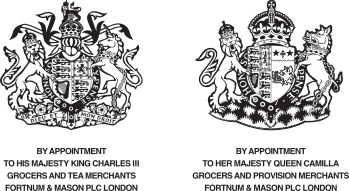


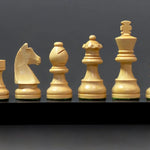
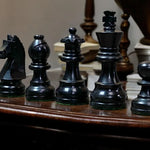
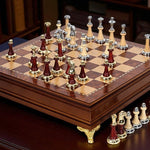
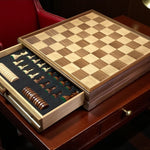
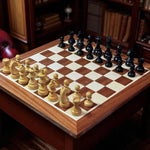
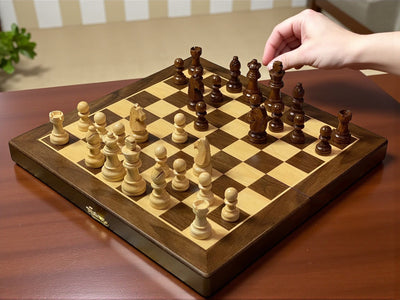
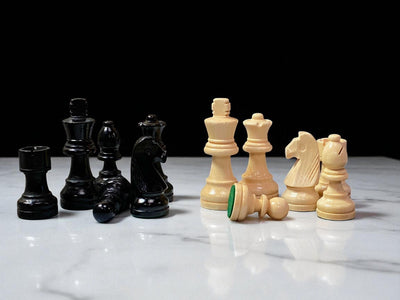
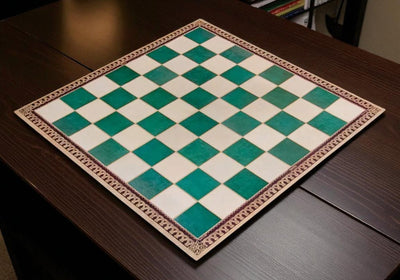
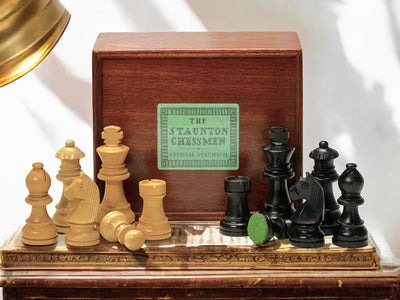
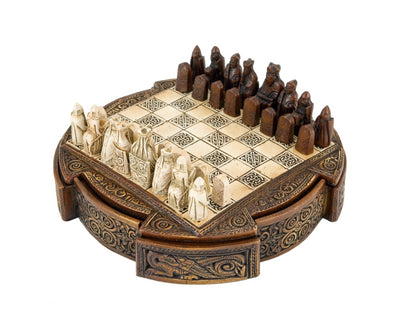
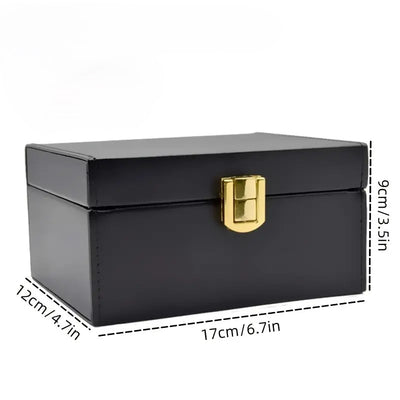
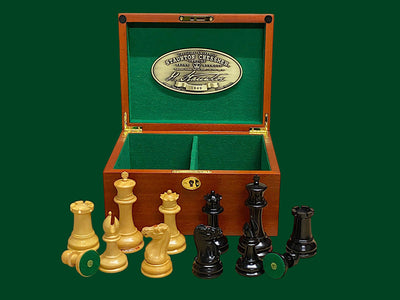
Leave a comment